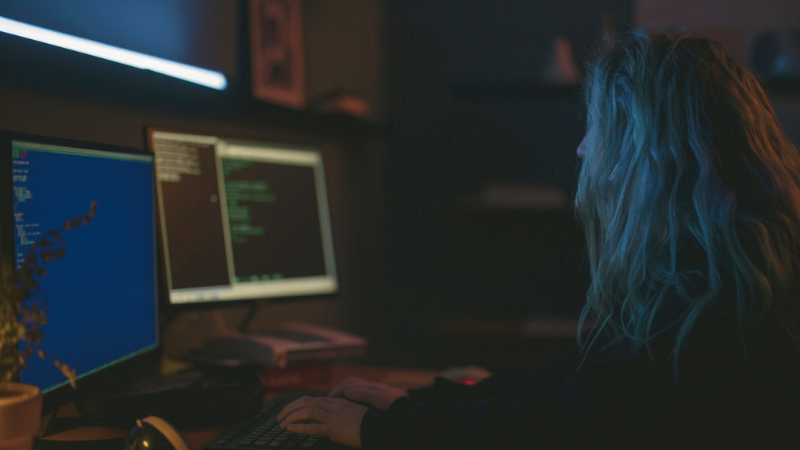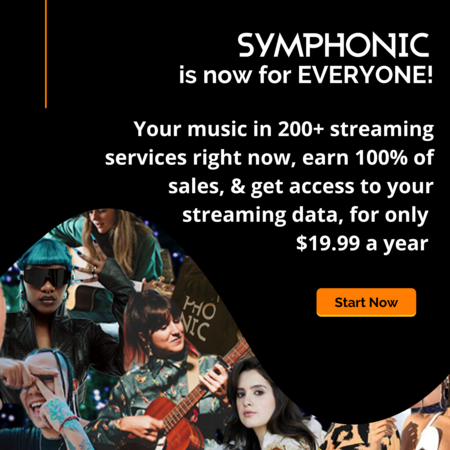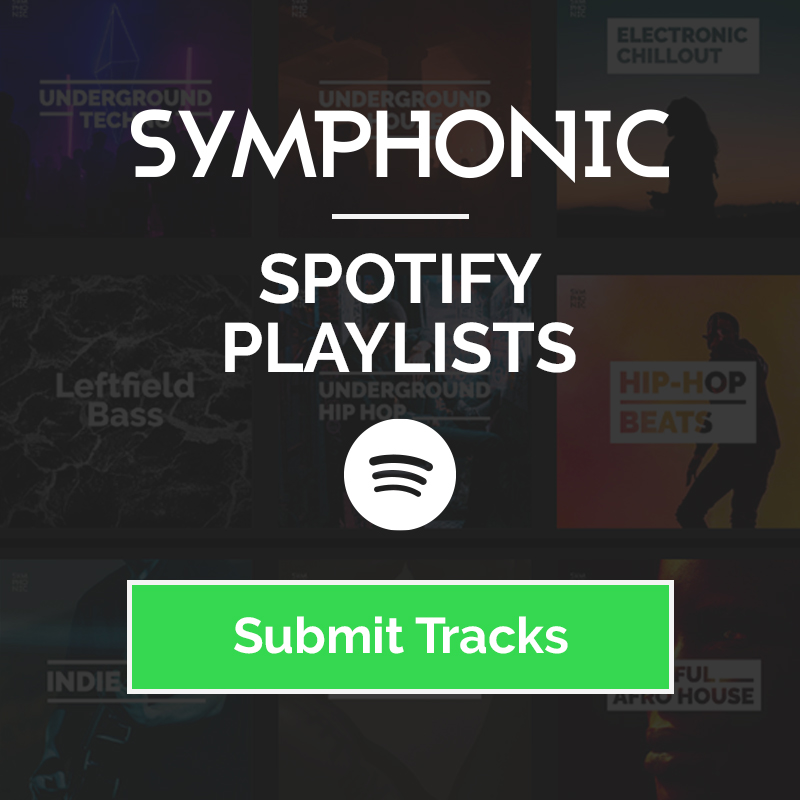
by Francesca | Jan 18, 2024 | Music Industry, Music Marketing
2023 is finally a thing of the past! It’s been a long year, but it’s time to start looking towards the future. As a musician, it’s important to set goals for your career and create a plan to make them happen. From learning new skills and getting more followers to earning more money and booking more gigs, setting clear goals is the key to seeing your dreams come to life. Here’s how to set better goals for the new year…
How To Set Better Goals As A Musician in 2024
Let’s talk S.M.A.R.T.
When it comes to goal setting, many pros around the world use the S.M.A.R.T method. Created back in 1981, S.M.A.R.T is an acronym that helps you create specific criteria for your goals to help improve the chances of their success.
What does it stand for?
S – Specific
M – Measurable
A – Achievable
R – Realistic
T – Timed
How to use the S.M.A.R.T Method:
When it comes to your music career, your goals need to be realistic and specific. You should be able to quantifiably measure their success. For them to be achievable for you as an artist, you also need to be able give it a set time period for it to be accomplished by.
🧠 Pro Tip: Always write down your goals. Once they’re written down, you can look back at them whenever you start to feel lost and get right back on track.
Here’s an example:
Let’s apply the S.M.A.R.T method to, “I want more people to listen to my music”.
What’s wrong with that? — This goal needs to be more specific. First, think about where you want more people to listen to your music. Which platform do you want these listeners on? Next, make it measurable. Come up with a variable that is quantifiable. Now, it’s time to make sure it’s achievable and realistic for where you are in your career. How many new listeners are you actually capable of reaching with your resources?
Those big time goals are good to keep in the back of your mind, but starting off with unrealistic goals will make you frustrated and disappointed when you’re just starting out. You’ll eventually reach those crazy goals, but you need to start small and work your way up. That being said, this leads us to the last step. Timed.
Your goals need to have a time limit. It’s easier to stay on track when you have a set time frame to get things done. (With checkpoints along the way!)
When you apply the S.M.A.R.T method to, “I want more people to listen to my music”, it turns into something like: “I want 1000 more monthly listeners on Spotify by May 31th.” instead. You can keep it focused on your profile’s full monthly listeners or you could break it down even further by focusing on a single release.
Now, that’s doable!
Let’s try one more.
Let’s try a more complex example for applying the S.M.A.R.T method. How about, “I want to go on tour.”
Great goal!
Let’s make it specific, measurable, achievable, realistic and timed. Specifically where and when do you want to go on tour? Is it the right time in your career to start touring? Do you have enough fans in various cities who would buy tickets to your shows? When do you want to achieve this by? What variables do you have to meet in order to meet this goal? For example, reaching X total amount of monthly listeners by this date or cultivating X amount of fans in X cities by this date.
How does this change our original statement? Something like, “I want to go on tour” changes to something like “I will meet XYZ requirements for touring by December 1st in order to start touring by January 1st .”
Make sense? Keep in mind, you can make these goals as specific as you need to. The more specific, the better.
In Conclusion…
2023 was rough for a lot of us. However, one thing it did give us was a chance to assess ourselves. What do we want for our music careers? What’s been working? What efforts have been more time consuming than fruitful? Now that you’ve had all this time to brainstorm about the future, it’s time to make sure your goals for the new year reflect that. 2024 is a great opportunity to jump back in and hit the ground running!
Just be S.M.A.R.T. 😉

by Francesca | Nov 30, 2023 | Music Marketing
As intimidating as it seems, consistently releasing new music (every month or even every week, if you believe that works for you) has many undeniable benefits. Aside from making your fans happy to hear more from you, this practice does a lot of good for artists at any level. In this post, we’ll give you 6 reasons to release new music consistently. Here’s the rundown…
How Releasing Music Consistently Can Improve Your Career
Increased Engagement
Consistency is good for engagement on any platform, no matter what you’re into. Want to get better at production? Practice every day. Want to improve your vocals? Sing every day. The same theory applies to putting out music. The more you do it, the most traction it’s going to get. And let’s face it… your fans want as much from you as they can get. When you release new music, on any platform, the amount of people who will interact with it will grow right along with you. Not to mention, from the fan point of view, there’s something exciting about being able to expect something new from your favorite artist every week.
Go Viral on TikTok
TikTok also thrives on consistency. The more you post, the better your chances of it being caught up in the wave of a random trend. Every time you release music, use it to make little TikTok babies. Whether you use it to follow existing trends or to try and create new ones, the more you post the better.
Not sure how to figure out what’s trending right now? No problem. We did a whole post right here that gives you 6 of the best ways to find the hottest trends right now. And if you’re new to TikTok, here are some helpful resources to help you thrive…
Grow Your Catalog
Releasing music more frequently helps you grow your catalog significantly faster than if you waited every 6 months. This can be advantageous for streaming platforms, as the more songs you have increases your chances of being discovered through playlists and algorithms.
If you already have an extensive back catalog, did you know there are things you can do with it to keep the momentum going behind the scenes while you work on new things? Check out, “How To Maximize your Back Catalog While Working on New Releases” to learn how.
Build Momentum
Releasing songs consistently is a great way to build momentum for something bigger down the line. If you plan on going on tour or releasing a full album later in the year, you can hype up the day to come on socials with every release more often. Get everyone on board and offer incentives for streaming your tracks. If they like what they hear, they’ll share your work with their friends and grow your audience one release at a time. When whatever big day finally arrives, you’ll have a whole team of people ready to experience the fun and share it on socials.
Better Chances for Sync
If you want to get featured in movies, TV, commercials and more, it doesn’t hurt to give sync reps a lot to choose from. Although having a lot to choose from does technically help your chances, what kind of music you have out also plays a part.
Jon Mizrachi, the Senior Director of Sync Licensing for our in-house sync licensing division, Bodega Sync, explains:
“If you really want your music to stand out, it’s important to understand that songs are used in sync to support a narrative, not to tell one. If there’s a sad montage where someone dies, you’re not going to hear a song with lyrics about someone literally dying… Even in advertising, which is typically far more literal, music will be used to add depth to whatever you see in the footage or hear in the voiceover. You know what’s not a great song for Toyota? A song about Toyotas.”
So, if you really want to focus on optimizing your music for sync, try to create universal songs that aren’t too specific. If the goal is to connect with the listener, you have to craft your songs to be as relatable as possible. In addition, once one of your songs gets featured, the chances of your other songs getting chosen for other sync opportunities goes up, too. The more music you have, the higher chance of something being perfect for that new TV show hitting the market.
Practice Makes Perfect
Putting out music more often gives you the chance to really experiment with your personal sound. You can try new things and see how your audience reacts and if it doesn’t quite hit, no big deal! Try something new the next time, and keep it moving.
At the end of the day, I realize putting out music consistently is no easy task. Depending on your music, it may even be impossible. If you specialize in full blown musical arrangements for every track or don’t have frequent access to a studio, finishing a full song on a monthly or even weekly schedule is insane to even fathom. At the end of the day, it is up to you and this is an idea to try out where it makes sense. Challenge yourself to at least try, and see how it works for you.
Good luck!

by Francesca | Nov 23, 2023 | Legal, Music Industry
In today’s rapidly evolving digital landscape, the importance of protecting your creative works, particularly your music, has never been more prevalent. With the rise of online sharing and distribution, creators face new challenges in safeguarding their intellectual property. Luckily, our friends over at Cosynd have some tips to help you combat infringement effectively, including utilizing the new Copyright Claims Board. Here’s what you can do…
What To Do If Your Music Gets Stolen or Misused
Register Your Copyright
The first and most fundamental step in protecting your music is registering your copyright with the U.S. Copyright Office. This legal action establishes your ownership and strengthens your position in the event of infringement. In fact, you cannot legally enforce your rights as the owner without a registration in hand.
Monitor Your Content
Regularly track the use of your music online. Utilize digital tools and services to identify any unauthorized sharing or use. This proactive approach will help you identify potential violations promptly.
Issue Takedown Notices
If you come across instances of unauthorized use, issue Digital Millennium Copyright Act (DMCA) takedown notices to the hosting platforms. This action prompts them to remove the infringing content.
Take Legal Action
If you find your work is intentionally reproduced, distributed, performed, publicly displayed, or made into a derivative work without your permission, you can pursue legal action.
Note: New regulations mandate that you must have an official registration with the U.S. Copyright Office before you can file a lawsuit. Other types of registrations or mailing your music to yourself are not alternative precautions. Early registration can grant you a large payout — up to $150,000 per infringement PLUS your legal fees, but only if you register before your music is stolen or misused.
Get Justice Without Breaking the Bank
We understand that Federal Court isn’t always an affordable option. Excitingly, the new Copyright Claims Board (CCB) offers an accessible path to address infringements without excessive costs or the requirement to hire an attorney. The CCB operates independently of the courts and provides a streamlined process for resolving disputes of up to $15,000 per work and $30,000 per case.
This alternative to federal courts is designed to empower creators and copyright holders, offering a more accessible and less complex way to navigate disputes. Through its electronic filing and case management system, the eCCB platform, the CCB is equipped to handle three key types of copyright disputes, spanning copyright infringement, declaration of noninfringement claims, and disputes regarding misrepresentations in DMCA notices.
Engage Legal Assistance
In more complex cases, consulting legal professionals with expertise in intellectual property can be invaluable. They can guide you through legal proceedings and ensure that your rights are adequately protected.
By taking these steps, you not only safeguard your music but also uphold the value of your creative efforts.
Good luck!

by Francesca | Nov 23, 2023 | Music Industry, Music Marketing
After all the blood, sweat and tears it took to finally get your new music out into the world, it’s finally time to get as many people to listen to it as possible! From the technical stuff like registering with PROs to the fun stuff like social media promo, here are some of the most important things every musician should be doing after their release goes live. Let’s dive in…
What To Do After Making Your Music Available Online
Register with a PRO
To make sure you receive the royalties you’re rightfully owed, your songs need to be properly registered with either ASCAP, SESAC or BMI. Sadly, we can’t do this for you. Only you as the writer can affiliate with a PRO.
If your music is being distributed, performed worldwide, and you don’t have a publishing deal, your royalties are sitting in collection societies around the world waiting to be claimed by you. If you don’t register in time to collect your royalties, the collection societies will retain the royalties and you will miss out on that additional revenue. That’s why we created our publishing administration service to help you get through this process as easily as possible.
Register with SoundExchange
SoundExchange has paid out more than $7 BILLION in royalties to date. They are the sole organization designated by the U.S. Congress to collect and distribute digital performance royalties for sound recordings. They’re the ones who collect these digital performance rights from non-interactive music streaming on internet sources like SiriusXM and Pandora.
Sign Up for Lyric Distribution
Some distributors have partnerships for lyrics distribution and submission for example: Apple Music, Musixmatch, and LyricFind. With these partnerships, you’re able to streamline and expedite the submission process for faster turnarounds and less hassle.
Update your ‘Artist Pick’ on Spotify
Artist Pick is a great way to highlight what’s important to you right now, whether it be your latest release, playlist, show announcement, or even a Fan Support link. Check out the video below to learn how to do it…
Promote It On Socials
Social media offers an easy and effective method for promoting your latest track. To do so, start by creating a strategy tailored to your goals and target audience. Next, you can engage with your followers by posting your song in Reels, Stories, TikTok’s, and wherever else your fans frequent. You can also collaborate with fellow artists to expand your reach even further. Remember to utilize relevant hashtags, create visually appealing content, and consider running targeted ads for wider exposure. Lastly, always encourage user-generated content from your fans! Ask them to tag you in their own posts featuring your song, and get permission to re-post it on your own profile.
Pitch for Sync
When we talk about sync licensing in the music business, we’re referring to the act of synchronizing a piece of music with any form of visual media. That means getting your music featured in movies, TV episodes, commercials, video games, etc.
Get Some Press
After releasing new music, it’s always a good idea to send your music to music journalists, bloggers, and magazines for potential reviews and features. You can even share it in Facebook Groups, Reddit threads, or anywhere else where people can see your new song and share it with their communities.
In Conclusion…
You worked hard on your new track. Don’t let it get lost in the shuffle of thousands of songs trying to break through this crazy industry. Practicing things like consistently hyping yourself up on socials, optimizing your Spotify, SoundCloud, Apple Music, etc. profiles, and everything else we covered above, can make or break the performance of your work.
In the meantime, be proud of all your hard work! Keep going, be consistent, and believe in your talents as an artist.
Good luck!

by Francesca | Nov 16, 2023 | Legal, Music Industry, Playlists
“Fake” artists are impersonators who steal music from real, hard-working artists like you and upload the tracks on streaming platforms like Spotify and Apple Music under false names through unsuspecting distributors. These fake artists also create fraudulent playlists with hundreds of fake songs, making them thousands of dollars in royalties stolen from their rightful owners. It’s important as a community that we fight against these practices, and the first step is learning how to recognize them. In this post, we’ll show you what to look for…
How To Detect Fake Spotify Playlists
A Blank Profile
One of the most obvious ways to tell if a playlist is fake is to check out the playlist curators’ profile. Typically, a real profile will have fully filled out bio, profile picture, links to socials, etc. Take a look at the followers, too. A playlist with tons of likes accompanied by a curator with no followers is definitely sus. Alternatively, if the followers they do have also have no profile pics, weird names or no additional info, those are most likely bots and another good sign to stay away.
Offering Paid Placements
Paying to be featured in a playlist is not only against Spotify’s policy, but also illegal. Oftentimes a fraudulent playlist curator will have a bio that claims you can be featured too, for a price. Typically, these playlists are using illegal third-party services, bots and click-farms to amass all those streams. If your own music gets caught on one of these playlists, you risk being removed from the entire platform yourself. Worth the risk? I don’t think so.
Many Different Genres
The whole point of a playlist is to serve you a certain vibe, set a mood, and offer a perfectly curated list of songs. That being said, if you spot a playlist with no specific vibe to it and tons of different genres sprinkled throughout, that’s a red flag. Let’s be real… going from Heavy Metal to Hyper-Pop to Country on a single playlist doesn’t make sense, no matter how diverse your taste is.
Random Related Artists
Click on some of the artists in the playlist and go to their “Fans also like” section. If these recommendations consist of artists who are completely different genres or have sketchy profiles, run the other way. This one may take you some time to vet, but it’s always better to take the time to be safe than to be sorry later. To be safe, I recommend checking 5 or 6 “artists”.
Inconsistent Followers
If a playlist is popping off with thousands of followers, shouldn’t the playlist curator themselves also have a similar number of followers on their personal profile? Typically, that’s how this music streaming thing works, right? You gain organic fans of your music and they follow you. (Duh!) That being said, if a playlist has a big discrepancy between the amount of followers and streams on the playlist versus the curator’s profile, this is a big, telltale sign that bots are running rampant.
You may be thinking… “How do these fake playlists even happen?”
Through independent distributors with limited oversight, these “fake” artists swindle their way through the process and upload infringing content right under the distributors’ nose. While these practices are strongly prohibited, these impersonators simply lie, using fake information along with other various tactics hoping nobody notices until it’s too late. This seems too easy to be true, but it works. In fact, it has been working so well that these impersonators have been making insane amounts of money off of music they have zero right to.
That’s why it’s so important to be wary of fake playlists and stolen music. It’s up to us as a community to report activity like this when we see it, do our best to protect each other from falling victim to these scams, and learn how to navigate situations like these when they do arise.
“What do I do if my music has been stolen?”
In the unfortunate case that your music has been stolen by one of these scammers, don’t freak out. There are a couple things you can do. From making sure your copyrights are in order to issuing takedown notices and taking legal action. Before any of these, however, the first thing you should do is report it to Spotify.
To do this, follow these steps:
- On the desktop app, right-click the playlist title or artist name.
- Select Report. A form will open in your browser.
- Complete the form and Submit.
The next thing you can do is make a legal claim on the content. Each report is investigated on a case-by-case basis, and any content that is deemed inappropriate will be removed. To make a legal claim, click here.
Good luck!







